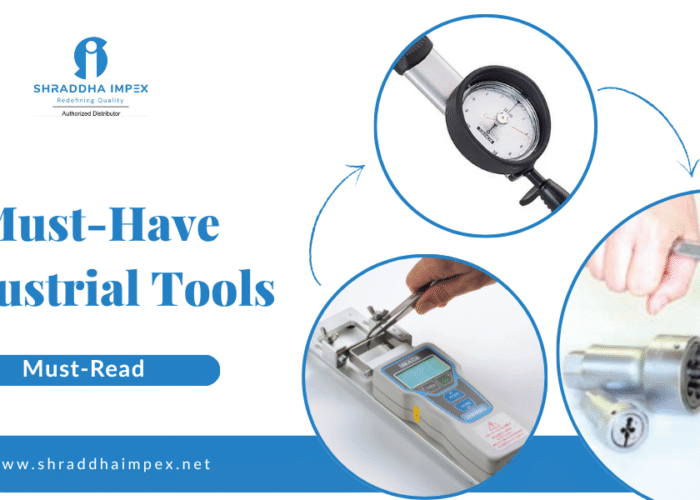Small in size, critical in function: the lobster lock secures bracelets, necklaces and other jewellery every day. Because these tiny clasps carry the full responsibility of keeping a piece of jewellery on the wearer, reliability matters; that is why lobster lock testing must be part of any jewellery testing program. With accurate force measurement and consistent force testing, manufacturers can confirm that lobster locks open and close reliably, resist accidental pulls, and withstand thousands of cycles. Imada force measurement equipment, supplied and supported by Shraddha Impex, gives the precision and industrial tools jewellery makers need for effective jewellery testing.
Choosing the right force measurement partner is more than buying a gauge. Manufacturers need a system that handles tensile testing, opening and closing force checks, lifecycle testing and clear data capture. Proper lobster lock testing is not only about measuring a breaking point. It is about understanding how the clasp behaves under everyday stresses, how the internal spring performs over time, and how small design or assembly changes affect long-term reliability. Imada’s force measurement tools, paired with Shraddha Impex’s support, answer those questions for both small workshops and larger production lines.
What is a lobster lock, and why does it need testing
A lobster lock is a spring-loaded clasp shaped like a small claw. It has a lever that opens the jaw when pressed and returns to its closed position when released. Despite its simple design, lobster locks can fail in ways that are hard to predict without testing. Springs lose tension, joints wear, soldered links deform, and small cracks can grow under repeated stress. Any of these failures can cause a valuable item to fall and be lost.
Testing identifies these failure modes before products reach customers. Quality control that includes force testing reduces returns, protects brand reputation and prevents warranty costs. For high-end jewellery, documented testing supports premium pricing and buyer confidence. For mass market jewellery, it cuts complaints and increases customer satisfaction. In every case, reliable testing turns uncertainty into a measurable, manageable part of production.
Key types of force tests for lobster locks
A practical lobster lock test plan includes several complementary tests. Each test measures a different characteristic, and together they build a full picture of clasp quality.
- Tensile or pull test
The tensile test pulls the clasp and the attached link or chain until the connection fails or the clasp opens. It measures the maximum force the assembly can withstand and helps identify weak points in the clasp design, the chain join or soldered areas. - Opening and closing force test
This test measures how much force is required to press the lever and open the clasp. Too much force makes the clasp hard to use. Too little force risks accidental opening. Measuring opening and closing force ensures the clasp is both ergonomic and safe. - Cycle or durability testing
Cycle testing simulates repeated daily use by opening and closing the clasp many times. It shows wear patterns, spring fatigue and loosening of joints. This is the closest test to real-life usage. - Spring force and resilience test
Measuring the spring force and how it recovers after cycles tells whether the clasp will continue to close tightly. This is especially important where small changes in spring tension can mean failure. - Angle and torque testing
Some failures happen when a clasp is pulled at an odd angle. Angle and torque tests reveal how much off-axis load a clasp can take before deforming or opening.
How Imada equipment fits into jewellery testing
Imada is known for precise force measurement tools. For lobster lock testing, three capabilities matter most: accurate force gauges, stable motorized test stands and reliable data capture.
- Force gauges measure forces in small units with fine resolution. For lobster locks, that resolution lets technicians tell the difference between acceptable and marginal spring forces or opening loads.
- Motorized test stands give controlled, repeatable movement. When running cycle or tensile tests, consistent speed and alignment are essential. Motorized stands automate those needs and reduce operator variation.
- Data logging and software capture test results, calculate statistics and create traceable reports. This data is required for quality records, trend analysis and continual improvement.
Imada instruments suit both bench-top use and production environments. Small workshops can use a handheld or benchtop gauge for spot checks. Production sites can install motorized stands with automated cycling and database integration. The same force measurement tools support incoming inspection, in-process checks and final release testing.
Setting up a practical lobster lock test protocol
A clear testing protocol makes results useful. The steps below can be adapted to product types and quality goals.
- Define test objectives
Decide if you need to check opening force, breaking strength, endurance cycles or all three. Set pass fail criteria up front. - Prepare representative samples
Test full assemblies that match the finished article. Testing only the clasp without the chain or jump ring can miss weak points at the connection joints. - Choose consistent fixtures
Use small clamps, hooks or custom jigs that grip without damaging the part. Fixtures should keep the load aligned with the intended pull direction. - Set test parameters
For tensile tests, record pull rate and angle. For cycle testing, set the number of cycles and any rest intervals. For opening force, define the exact measurement point and travel distance. - Run a pilot test
Execute a few trials to confirm that fixtures and settings produce repeatable results. Adjust as needed. - Record and analyse
Capture peak forces, averages and failure modes with the Imada gauge and software. Keep photos and notes explaining failures. - Define acceptance criteria and sample size
Choose a statistically meaningful sample size for lot acceptance. Define critical failures versus cosmetic defects. - Document for traceability
Store test reports, calibration records and operator notes. This supports customer queries and internal audits.
Example fixture ideas for lobster locks
Small parts require the right fixtures for reliable tests.
- Mini hook grips that catch the clasp loop and chain link without compressing metal.
- Custom jaws with soft inserts to avoid scratching plated surfaces.
- Spring compression fixtures that measure the internal spring by compressing the lever directly.
- Rotating mounts to test at different angles without reclamping the part.
Custom fixtures are often simple and inexpensive to make. They save time and prevent test errors.
Choosing the right Imada tools and features
When selecting force measurement tools for lobster lock testing, look for these features.
- Capacity and resolution
Choose a gauge with a capacity slightly above the expected failure force and with high resolution at low loads. For many clasps, sensitivity at low force is more important than high capacity. - Motorized stand compatibility
If you plan automated tensile or cycle testing, pick a gauge that mounts on an Imada motorized stand. - Data connectivity
USB or serial output and software support reduce manual entry errors and speed reporting. - Calibration and service
Accuracy must be maintained with regular calibration. Authorised service keeps measurements traceable. - Ergonomics
Clear displays, simple controls and easy fixture changes reduce testing time and operator fatigue.
Shraddha Impex provides authorized calibration and maintenance for Imada equipment, helping keep results reliable and traceable.
The role of Shraddha Impex as an authorized distributor
Buying from an authorized distributor turns a good instrument into a working capability. Shraddha Impex offers direct access to Imada products, technical guidance and local service. That support includes:
- Product selection suited to jewellery types and expected loads.
- Installation and training so staff run tests correctly and interpret results.
- Calibration and service to keep instruments in specification.
- Spare parts and fixtures compatible with Imada tools.
- Application support to help write protocols and set acceptance criteria.
How test data improves design and production
Force testing does more than block bad items. Test data helps design and production improve.
- Design feedback reveals shapes, materials or soldering methods that create weak points. Designers can change geometry or material to reduce stress concentrations.
- Supplier control helps procurement choose chain and jump ring suppliers who meet force targets.
- Process control spots assembly steps like crimping or soldering that introduce variation.
- Predictive maintenance for production tools prevents defects. For example, worn crimping tools can be identified before they affect a batch.
A lobster lock may be small, but its role is large. Force testing gives manufacturers a measurable way to reduce risk, increase customer satisfaction and protect brand reputation. Imada force measurement tools provide the precision, repeatability, and data capture that jewellery testing requires.
Shraddha Impex, as the official distributor, brings local expertise, product selection, calibration and service to make those tools work in real production settings. For more details and sales or service support, contact Shraddha Impex.



